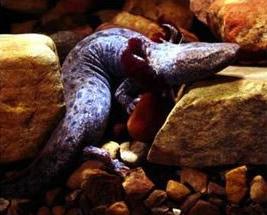 Turtles have been much in the news as potential carriers of Salmonella, but many people do not realize that nearly any creature, including dogs and cats, can transmit the bacteria. Less well-known are the potential health problems posed by Micobacteria, many species of which thrive in aquariums housing fishes, amphibians, reptiles and/or invertebrates. Coralife Aqua Gloves are an excellent safety measure for those times when your hands must be submerged in aquarium or aqua-terrarium water.
Turtles have been much in the news as potential carriers of Salmonella, but many people do not realize that nearly any creature, including dogs and cats, can transmit the bacteria. Less well-known are the potential health problems posed by Micobacteria, many species of which thrive in aquariums housing fishes, amphibians, reptiles and/or invertebrates. Coralife Aqua Gloves are an excellent safety measure for those times when your hands must be submerged in aquarium or aqua-terrarium water.
Mycobacteria and Aquatic Pets
Those keeping newts, aquatic frogs and fishes usually give less thought to potential health hazards than turtle keepers. However, in a recent conversation with an infectious disease doctor I learned that Micobacteria infections are often more common than Salmonellosis among aquarists and herp keepers (infections from cat scratches seem to top the list in every infectious disease practice).
Using Aqua Gloves
 Coralife Aqua Gloves are actually marketed for use in marine aquariums, to prevent stings and nips from creatures such as corals, anemones and lobsters, and they serve that purpose admirably. But I also find them quite useful when working in aquariums housing aquatic reptiles and amphibians. In such situations, standard disposable latex gloves offer no protection, as water seeps inside them once they are submerged. While designed for use underwater, Aqua Gloves also come in handy for any job where splashed water might bring bacteria into contact with skin.
Coralife Aqua Gloves are actually marketed for use in marine aquariums, to prevent stings and nips from creatures such as corals, anemones and lobsters, and they serve that purpose admirably. But I also find them quite useful when working in aquariums housing aquatic reptiles and amphibians. In such situations, standard disposable latex gloves offer no protection, as water seeps inside them once they are submerged. While designed for use underwater, Aqua Gloves also come in handy for any job where splashed water might bring bacteria into contact with skin.
Aqua Gloves are an especially good idea during the winter, when cracked skin on one’s hands can serve as an invitation to bacterial attack.
Aqua Gloves extend from fingertips to the very top of the arm, where an elastic band helps keep them in place. Fashioned from PVC and fiber-reinforced, they are flexible and allow for precise finger control.
Further Reading
Product information on Aqua Gloves is posted on our web site here.
You can learn more about preventing Salmonella infections on the website of the Arizona Exotic Animal Hospital.
Further information on Micobacteria in aquariums is available here.
 That Reptile Blog – Reptile, Amphibian and Exotic Pet Care and Information
That Reptile Blog – Reptile, Amphibian and Exotic Pet Care and Information


